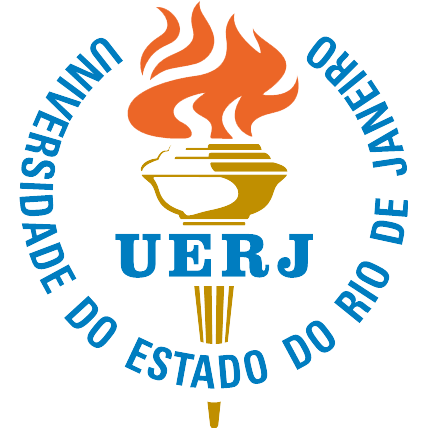Population-based study: socio-demographic and health profile of older adults [Estudo de base populacional: perfil sociodemográfico e de saúde em idosos] [Estudio de base poblacional: perfil sociodemográfico y de salud en ancianos]
DOI:
https://doi.org/10.12957/reuerj.2018.21473Keywords:
Health of the Elderly, aging, health profile, Population studies in Public Health.Abstract
Objective: to identify the sociodemographic and health profile of older adults in municipalities of the Uberaba Health Region in Minas Gerais, Brazil. Method: in this cross-sectional, population-based study, the Mini-Mental State Examination, a demographic and health profile instrument, the Mini Nutritional Assessment, WHOQOL-BREF and WHOQOL-OLD were applied to 3430 older adults in 24 cities, between 2012 and 2013. Data were analyzed using SPSS version 20.0. Results: female (61.5%), 60 to 69 years old (52.6%), no schooling or incomplete basic schooling (83.5%), income of one minimum wage or less (39.7%), pensioners (80.7%), mean 3.17 illnesses (SD = 1.92), use of 2.47 medicines (DP = 1.37), at risk for malnutrition (29.1%), overweight (62.9%), alcohol use (15.7%), smoking (15%), sedentary (43.1%), and with lowest quality of life scores in the environment domain (62.0%; DP = 13.2) and autonomy facet (66.8%; DP = 16.4). Conclusion: the study population was characteristically female, low-income, overweight, sedentary, had three diseases, and lowest quality of life scores in the environment domain and autonomy facet.
RESUMO
Objetivo: identificar o perfil sociodemográfico e de saúde de idosos dos municípios numa regional de Minas Gerais. Método: estudo transversal de base populacional, realizado em 24 cidades com 3430 idosos, entre 2012 e 2013. Aplicou-se: Miniexame do Estado Mental, instrumento de perfil sociodemográfico, Miniavaliação Nutricional, WHOQOL-BREF e WHOQOL-OLD. Para a análise se usou SPSS versão 20.0. Resultados: sexo feminino (61,5%), 60 a 69 anos (52,6%), sem escolarização/analfabeto ou fundamental incompleto (83,5%), recebendo até um salário mínimo (39,7%), aposentados (80,7%) média de 3,17 (dp=1,92) doenças por idoso, uso em média de 2,47 medicamentos (dp=1,37), risco para desnutrição (29,1%), excesso de peso (62,9%), etilismo (15,7%), tabagismo (15%), sedentarismo (43,1%), qualidade de vida com menores escores no domínio meio ambiente (62,0/dp=13,2) e, na faceta autonomia (66,8/dp=16,4). Conclusão: sexo feminino, baixa renda, média de três doenças por pessoa, excesso de peso, sedentarismo e qualidade de vida com menores escores no domínio meio ambiente e faceta autonomia caracterizam a população pesquisada.
RESUMEN
Objetivo: identificar el perfil sociodemográfico y de salud de ancianos de las ciudades en una Regional de Salud de Minas Gerais, Brasil. Método: estudio transversal de base poblacional, realizado en 24 ciudades junto a 3430 ancianos, entre 2012 y 2013. Se aplicó: mini-examen del estado mental, instrumento del perfil del sociodemográfico, mini-evaluación nutricional, WHOQOL-BREF y WHOQOL-OLD. Para el análisis se utilizó SPSS versión 20.0. Resultados: sexo femenino (61,5%), 60 a 69 años (52,6%), sin escolarización/analfabeto o secundario incompleto (83,5%), recibiendo hasta un salario mínimo (39,7%), jubilados (80,7%), promedio de 3,17 (dp=1,92) enfermedades por anciano, uso de 2,47 remedios (dp=1,37) en promedio, riesgo para la desnutrición (29,1%), exceso de peso (62,9%), alcoholismo (15,7%), tabaquismo (15%), sedentarismo (43,1%), calidad de la vida con menores puntuaciones en el dominio medio ambiente (62,0/dp=13,2) y, en el área autonomía (66,8/dp=16,4). Conclusión: sexo femenino, bajos ingresos, promedio de tres enfermedades por persona, exceso de peso, sedentarismo y calidad de la vida, con menores puntuaciones en el dominio medio ambiente y el área autonomía, caracterizan la población encuestada.
Downloads
Published
How to Cite
Issue
Section
License
When publishing in Revista Enfermagem UERJ, the authors declare that the work is their exclusive authorship and therefore assume full responsibility for its content.
Authors retain copyright to their article and agree to license their work using a Creative Commons Attribution International Public License (CC BY), thereby accepting the terms and conditions of this license (https://creativecommons.org/licenses/by/4.0/legalcode.en), which allows material created by the author to be distributed, copied and displayed by third parties. The original work must be cited and present a link to the article available on the website of the journal in which it was published.
The Copyright of the articles published in Revista Enfermagem UERJ belongs to their respective author(s), with the rights of first publication assigned to Revista Enfermagem UERJ, with the work simultaneously licensed under a Creative Commons License CC BY, which allows sharing of work with recognition of authorship and initial publication in this journal.
The authors grant Revista Enfermagem UERJ the right of first publication, to identify themselves as the original publisher of the work and grant the magazine a license of non-exclusive rights to use the work in the following ways:
- Sell and/or distribute the work in printed copies and/or electronic format;
- Distribute parts and/or the work as a whole with the aim of promoting the magazine through the internet and other digital and printed media;
- Record and playback work in any format, including digital media.
In line with the journal's policies, each published article will be assigned a Creative Commons Attribution (CC BY) license.









